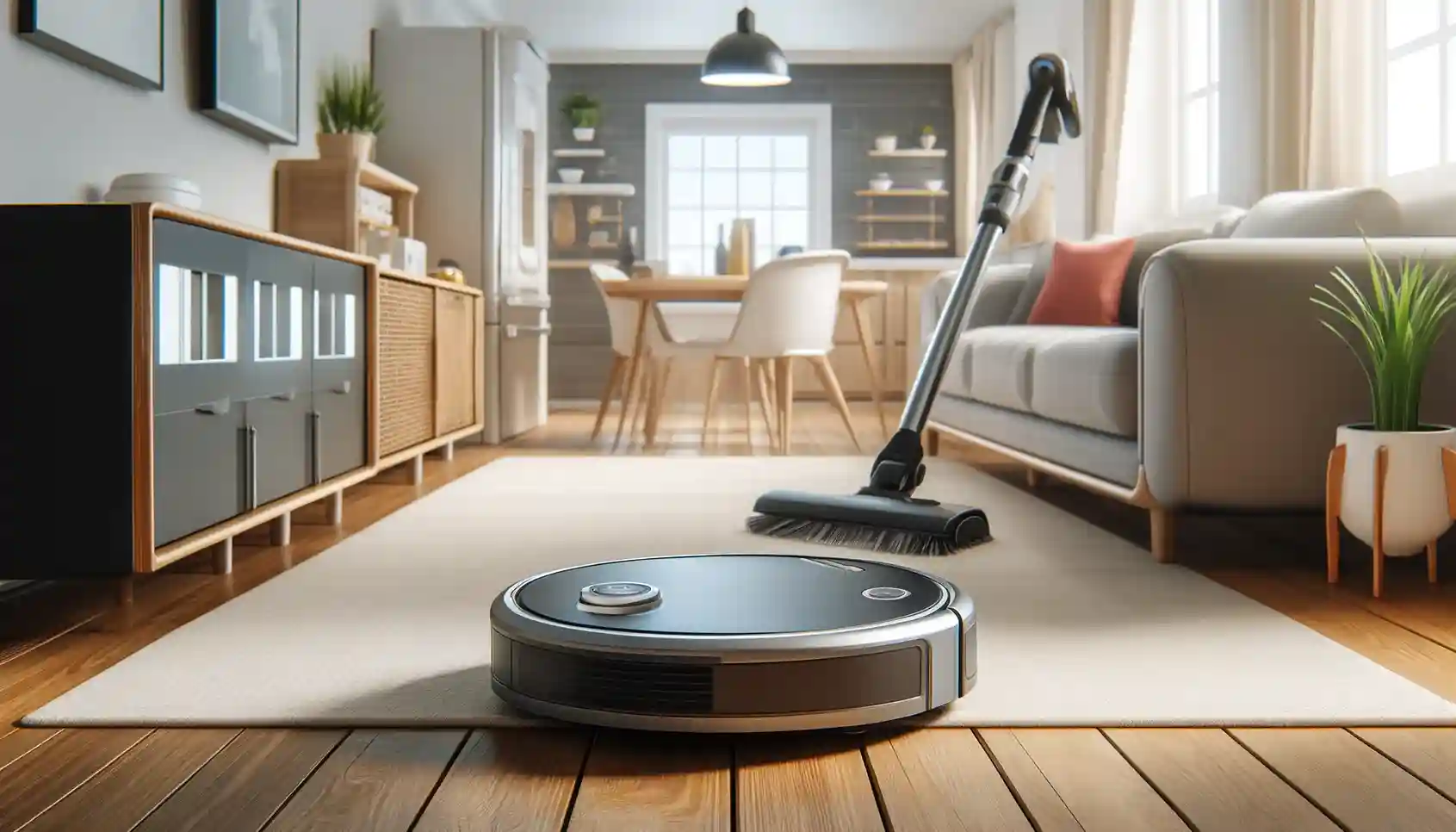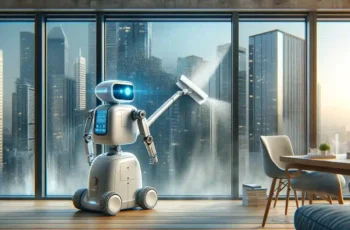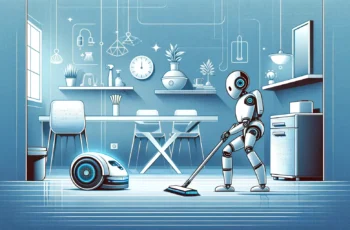The ascent of robot vacuum cleaners has transformed household cleaning, presenting a compelling blend of technology and convenience. With their promise of automating the mundane task of floor cleaning, these devices have sparked widespread curiosity: Are they truly the future of home maintenance, or just a passing trend?

The Evolution of Robot Vacuum Cleaners
Robot vacuum cleaners have evolved significantly from being considered high-end luxury items to becoming essential tools in household cleaning, thanks to technological advancements in sensor accuracy, battery life, and cleaning efficiency. These machines have transitioned from performing basic dust collection to boasting sophisticated mapping technologies and smart home integration, allowing for seamless navigation and efficient cleaning across various floor types. Improvements in battery technology have enabled these vacuums to operate longer, covering more areas without frequent recharging. The enhanced suction power and advanced filtering systems effectively remove dust, allergens, and pet hair, improving indoor air quality. With the ability to be controlled remotely via smartphones or integrated into broader smart home systems, robot vacuum cleaners offer a convenient, time-saving solution for maintaining cleanliness in modern living spaces, thereby solidifying their status as a necessity in the evolving landscape of home maintenance.
Benefits of Robot Vacuum Cleaners
- Time Efficiency: Automate routine cleaning tasks, freeing up hours in your schedule that were previously spent on manual vacuuming.
- Reduced Physical Effort: Eliminate the need for manual pushing and carrying, ideal for those with physical constraints or busy lifestyles.
- Versatile Floor Cleaning: Adapt to various floor types, ensuring thorough cleaning whether on hardwood, tile, or carpet.
- Comprehensive Coverage: Intelligent navigation systems map out spaces to clean every corner and under furniture, missing no dirt or debris.
- Improved Air Quality: Incorporate HEPA filters or similar technologies to capture fine particles, reducing allergens and pollutants in the home.
- Beneficial for Allergy Sufferers: Specifically helpful for those with allergies or respiratory conditions, as they consistently maintain lower levels of dust and allergens.
- Smart Home Integration: Seamlessly integrate with home automation systems for scheduled cleanings and remote control, enhancing convenience and control.
Analyzing the Hype: Consumer Expectations vs. Reality
In analyzing the hype around robot vacuum cleaners, it’s clear that marketing often paints an idealized picture of their capabilities, leading to high consumer expectations. The reality, however, can be different. While these devices offer remarkable convenience and are touted for their advanced features, such as smart navigation and automated scheduling, the actual performance can vary. Consumers expecting a completely hands-off cleaning solution may find that robot vacuums need occasional human intervention, especially in homes with complex layouts or varied floor types. The gap between the marketed ease of use and the real-world need for occasional troubleshooting or manual cleaning highlights the importance of tempering expectations with practical experience. This analysis helps potential buyers understand that, although robot vacuums are highly effective in many aspects, they may not fully replace traditional cleaning methods in every scenario.
Top Robot Vacuum Cleaners on the Market
Delve into the elite of robotic cleaning with our curated list of the top robot vacuum cleaners on the market, each distinguished by their innovative features and exceptional performance:
- Roborock S7 MaxV Ultra: Renowned for its precise navigation and powerful suction, this model offers versatile cleaning modes suitable for various floor types. Its mop lifts when carpet is detected, ensuring a thorough cleaning without dampening inappropriate areas. Smart home compatibility allows seamless integration and control through voice commands or mobile apps.
- Ecovacs Deebot X1 OMNI: Stands out with its all-in-one docking station, providing automatic dustbin emptying, mop washing, and drying, minimizing manual maintenance. Advanced navigation and AI-driven object recognition technology enable efficient cleaning paths and obstacle avoidance.
- iRobot Roomba s9+: Known for its deep-cleaning capabilities, especially on carpets, thanks to its powerful suction and corner-shaped design. It features a self-emptying base and detailed room mapping, allowing for customized cleaning schedules.
- Shark IQ Robot XL: Offers a self-emptying base and a large dustbin, making it ideal for larger homes. Its methodical cleaning pattern ensures complete room coverage, and it’s capable of handling both carpets and hard floors effectively.
- Dyson 360 Heurist: Boasts powerful suction and intelligent navigation, with a full suite of sensors and a camera for precise mapping. Its strong performance on carpets and hard floors, along with the ability to integrate with the Dyson app for detailed cleaning reports, makes it a premium choice.
Assessing the Pros and Cons of Robot Vacuum Cleaners
Evaluating the pros and cons of robot vacuum cleaners reveals their impact on home cleaning:
Positives of Robot Vacuum Cleaners:
- Effortless Cleaning: Automates the vacuuming process, reducing the need for manual cleaning.
- Advanced Navigation: Utilizes sophisticated sensors to navigate around obstacles and cover entire floor areas efficiently.
- Customizable Schedules: Allows setting cleaning routines that fit the user’s lifestyle, ensuring regular maintenance of cleanliness.
- Smart Home Integration: Seamlessly connects with other smart home devices for enhanced control and convenience.
Negatives of Robot Vacuum Cleaners:
- Limited Dustbin Capacity: Requires frequent emptying, especially in larger homes or areas with more dirt.
- Struggles with High-Pile Carpets: May have difficulty navigating or cleaning thicker carpets effectively.
- Regular Maintenance Needed: Components like brushes and filters need routine cleaning or replacement to maintain performance.
- Initial Cost: High-quality models can be expensive, representing a significant upfront investment.
Cost vs. Benefit Analysis: “Is the Investment Justified?”
The investment in a robot vacuum cleaner involves a cost versus benefit-analysis where the price of the device is weighed against the practical advantages it offers. Robot vacuums come in a range of prices, with premium models boasting advanced features such as sophisticated navigation systems, greater suction power, and more comprehensive smart home integration. Consumers considering a robot vacuum should assess how often the device will be used, the complexity and size of the cleaning area, and the level of cleanliness they expect to achieve. High-end models may justify their cost for those requiring extensive cleaning over large, complex areas or those seeking the convenience of advanced smart features. In contrast, more basic models might suffice for smaller spaces or less frequent cleaning needs. Ultimately, the decision should align with the individual’s lifestyle, cleaning requirements, and budget, ensuring the chosen robot vacuum provides value commensurate with its cost.
Consumer Insights: “Real Users, Real Opinions”
User testimonials for robot vacuums paint a picture of general satisfaction, highlighting the significant time savings and consistent cleanliness these devices provide. Many users appreciate the automation and ease of use, noting the convenience of scheduled cleanings and the ability to maintain floor cleanliness with minimal effort. However, there are also recurring comments about the limitations of robot vacuums; some users point out that while these devices are excellent for day-to-day maintenance, they may not fully replace the need for occasional manual deep cleaning, particularly for more challenging messes or in areas where the robot vacuum struggles to reach effectively.
Conclusion
Robot vacuum cleaners, with their blend of convenience and innovation, have earned their place in the modern home. While not a panacea for all cleaning challenges, they represent a significant step forward in making home maintenance more manageable and efficient.
FAQs:
A robot vacuum cleaner is adept at detecting boundaries. With advanced sensors and a protective buffer, it can navigate around furniture and avoid falls down the stairs, protecting itself and your home while cleaning.
Most robot vacuum manufacturers recommend emptying the dustbin after each cleaning session. Brands like iRobot and Neato have specific guidelines for their Roomba and Botvac models, emphasizing routine emptying for optimal performance.
Nearly all modern robot vacuums are designed to “recharge and resume,” allowing them to clean large spaces efficiently. A model with at least 120 minutes of runtime is capable of cleaning an entire house in one go, with 180 minutes being ideal for complete coverage.
For most homes, running a robot vacuum four times a week is sufficient to keep the floors dust-free. However, in homes with children, pets, or for individuals with allergies, daily vacuuming may be necessary to maintain a cleaner environment.


